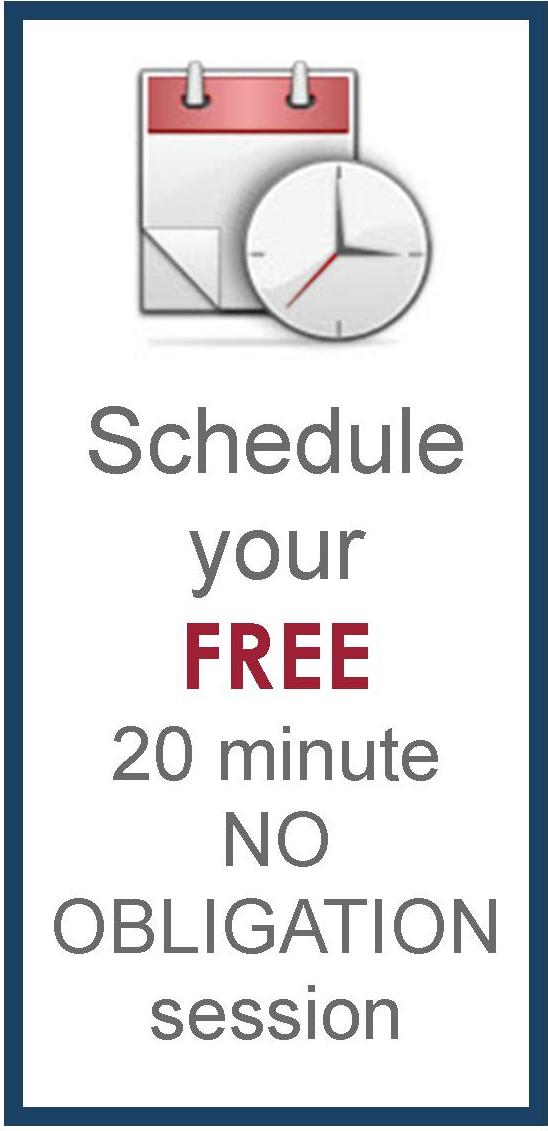5 ideas to unlock time spaciousness
Table of Contents
Introduction
The book
One simulation example
Imagining 10 years into the future
Understanding time spaciousness
1) Spend your time well
2) Be mindful and present
3) Turn challenges into opportunities
4) Community and connection
5) Design a play-full life
Benefit to educators
Personal benefits
Conclusion
Introduction

I have all the time and space in the world when I write a book. ~ Diana Gabaldon, Author
As we enter the new year, you may be feeling pressed for time again. I know I do. Once the holiday season finishes, it’s back to work as usual. For professors and administrators, that usually means preparing for the coming semester, finishing syllabi, checking on whether books have arrived, and trying to finish any writing project scheduled for the break between classes. Time can feel like a fleeting resource.
In this post, I want to consider 5 ideas for unlocking time spaciousness tied to looking 10 (yes, ten) years into the future for yourself and your own work. You can simultaneously plan for the immediate future of this coming semester while thinking far into the future. Consider embracing the principles of time spaciousness to enhance your life and work instead of creating a New Year’s Resolution for 2024.
The book
This idea has developed because one of my book groups has been reading Imaginable: How to create a hopeful future—In your own life, your community, the world (2023). The author, Jane McGonigal, is a renowned game designer and futurist, currently Director of Games Research and development at the Institute for the Future, a non-profit research group in Palo Alto, California, and teaching courses such as “How to Think Like a Futurist” at Stanford University. She earned her PhD the University of California at Berkeley. McGonigal’s gaming and projection research often involves tens of thousands of simulation participants.
Imaginable is an ambitious work, filled with big ideas around imagining an “unimaginable” or “unthinkable” future. She offers a variety of questions to ask yourself to think “ridiculous at first” ideas on what could potentially happen in the future. The best part of this exercise is learning to imagine a more optimistic situation than the dystopian scenarios that might first spring to mind.
One simulation example
In 2008, she designed a simulation to map out what roughly 10,000 participants thought the impact on the world might be (economically, politically, socially, and emotionally) due to the occurrence of the worldwide respiratory virus pandemic. The scenario was projected to occur in 2019. Although this was not the only scenario participants were asked to consider, this one certainly feels prescient.
Perhaps one of the most interesting results of this simulation was that when the actual Covid-19 pandemic began leading to lockdowns in the spring of 2020, people who participated in the simulation felt more prepared to deal with the actualities of the pandemic than those who did not participate, simply by virtue of imagining the future. The more detail you can picture, as well as imagining reasons a future scenario might occur, the less ridiculous the ideas feel, and the easier it is to cope when a prediction becomes reality.
Imagining 10 years into the future
McGonigal uses 10 years as the demarcation line for imagining the future because that is the time most of her simulation participants pick as their ability to imagine significant changes in both society and their own lives. We already conceptualize our lives in terms of decades lived and think about our past in terms of our teens, our twenties, our thirties, and so on. We also conceptualize societal change in terms of decades. She gives numerous examples of societal change for good or ill that occurred over a ten-year span, whether or not they map to a particular decade.
McGonigal is not asking you to predict an actual future with any degree of accuracy. In fact, “ridiculous at first” is akin to a brainstorming session in a group setting with a whiteboard to note down every idea that appears to participants. The point is to foster mental flexibility toward any imagined scenario you feel is likely, unlikely, good, or bad.
Spotting trends can help you see which direction a potential future scenario seems headed. Allowing elasticity around your predictions can help you determine whether you feel the imagined future poses a threat or an opportunity for you. Some goals may take longer to achieve than 10 years, but imagining that far out can take away a sense of urgency or fear of making an irreparable mistake.
Thinking ten years out creates space to acquire new skills, find different resources, learn from mistakes, alter our approach to a problem, and engage others in our vision for what we believe is the best possible outcome. Approach time with a playful and strategic mindset.
Understanding time spaciousness
At its core, time spaciousness is about reclaiming control over our perception of time. Thinking in days and weeks will promote a sense of being rushed. Challenging the prevailing notion that time is a limited commodity, McGonigal instead suggests we can alter our mindset to create a sense of spaciousness. Brains respond to a sense of abundant space as well as abundant time. We often literally think better by looking out a window for the big picture. Let your mind wander, imagine the biggest possible goals for yourself, and expand your interior view of future accomplishments.
Below are 5 ideas to unlock time spaciousness for yourself.
1) Spend your time well
Engage in activities aligning with your values doing things that bring you joy. By consciously choosing how to spend your time, you can create a sense of fulfillment and purpose. This approach involves being intentional about your daily choices, from your academic work to relaxation time with your family. Recognize the impact of savoring each moment to benefit your overall well-being.
2) Be mindful and present
Mindfulness practices play a crucial role in cultivating time spaciousness. McGonigal advocates for being fully present in the current moment, allowing us to savor experiences and extract greater meaning from them. By practicing mindfulness, we can break free from the constraints of a hurried academic lifestyle and appreciate the richness of each passing moment. This practice will help slow down your mind when it is racing with all the obligations that need to be fulfilled. Amidst the hustle and bustle, tend to your personal serenity.
3) Turn challenges into opportunities
In the realm of game design and gameplay, challenges are viewed as opportunities for growth and advancement. Draw inspiration from game design and approach life’s challenges with a “gameful” mindset. Reframe obstacles as opportunities to learn and evolve, transforming your relationship with time as a resource for personal development. Remember, the Chinese character for “crises” is a melding of two concepts, “danger or precarity,” combined with “the opportunity for a change point.”
4) Community and connection
Social connections shape our perceptions of time. Engaging in shared experiences and fostering meaningful connections with others can create a sense of time spaciousness. Whether through collaborative projects, shared goals, or simply spending quality time with loved ones, your connections with others can expand your experience of time.
Thinking 10 years out shifts our mindset from first person to third person. People thinking about the recent past (yesterday) or very near future (tomorrow) frame the narrative in the first person, all about “me.” Shifting to a longer-term perspective moves the egocentric narrative to a third-person narrative. Using “he, she, it, or they” seems to be a natural way humans imagine a distant future. Third-person narratives can help get us unstuck from old ways of thinking, create empathy for those we don’t know personally, allow new ideas and information to emerge, and open unexpected potentialities.
5) Design a play-full life
Setting goals, creating challenges, and establishing rewards for ourselves, can introduce an element of playfulness into your routines. This not only adds excitement to your daily activities but also contributes to a more expansive perception of time. Keep taking those mental trips 10 years into the future as you experience your day-to-day life. Pay attention to trends and signals of change. Speculate where the change will lead in 10 years’ time. Given rising sea levels and living on the coast, I have been imagining what will happen to me and my home when my town is swamped and where I might go live. It’s not all bad: I can also envision a future where passive waterparks take storm surges and dissipate them away from my home, too. Live in the now while simultaneously thinking about the future. Keeping your ideas playful and your actions play-full will mitigate your fears about the future.
Benefit to educators
As an educator, imagining the future using the time spaciousness of 10 years out can be a way to live in uncertainty. How education is delivered in the US is in flux. The pandemic brought more people to the idea of learning in the virtual classroom. Even after lockdowns had largely ended, many educational institutions, from elementary schools through universities, have retained the idea of hybrid learning.
We all understand virtual learning can be a poor substitute for attending a classroom, especially for young students, but perhaps is an emerging technology more engaging for students and teachers alike. I cannot help but imagine the holographic classrooms envisioned in various science fiction movies where a student can walk into an engine design. The development of virtual reality games can help teach strategy, planning, nimble judgment, and rapid implementation of knowledge.
Playing with where trends might lead could be an interesting exercise for political science classrooms. Past historical events can be experienced first-hand and perhaps even played to a different outcome than what happened. The result is better critical thinking (aka problem-solving), risk assessment skills, group cohesion in working groups, new ideas generated, and generally having fun in the learning process.
In your academic work, instead of haphazardly dashing to the next deadline and the next, feeling perpetually behind, you could consider using McGonigal’s concept of time spaciousness for a refreshing perspective. Start by thinking one semester ahead, then expand your thinking to one year, then leapfrog to thoughts about what you want to have happen by the end of the next ten years. Are you still teaching? At a university? Do universities still exist?
Think about the big ideas or themes for your topic and what you want students to take away from your courses. Of course, from a pragmatic standpoint, you do need to map out the actual class sessions, exam schedule, and project due dates, with time to grade them onto your calendar. Try thinking about your courses from a larger, more generous time perspective. Envision teaching the course a year in the future, making whatever changes you like to relax and alleviate the sense of time crushing down on you.
If you want to write a book on a subject unrelated to achieving tenure, schedule it on the calendar ten years from now. With a sense of time spaciousness, you may find it easier to work on a project intermittently instead of feeling rushed to finish it. Yes, at some point, if you want to make the book a reality, you will have to ramp up the writing schedule to finish the project. In the meantime, enjoy the sense, like Diana Gabaldon quoted above, that you have all the time and space in the world you need when writing a book.
Personal benefits
While it is true that humans are notoriously bad at imagining their own future and that for someone in their 70s, 80s, or 90s, thinking 10 years out may seem like an unhelpful exercise. For a sense of time spaciousness, maybe it’s worth imagining you could live past 100 years. Or perhaps you begin thinking in terms of legacy: what do I think the world will look like once I’m gone? Looking at current trends, what impact do I want to make? How can I create and influence the kinds of futures I want to see? How should I craft my life differently now? Imagining the future differently can set the groundwork to stop your worrying about the immediate future, and let you for craft your life differently instead of passively waiting to die.
For myself, I spend too much time imagining possible risks, disaster scenarios, and negative outcomes for the future of humanity. Pessimism about the future is easy. Last year I talked about maintaining equanimity as your focus. What I do not do as well is hold optimism around the long-term future of humanity and the planet. This is where implementing some of McGonigal’s ideas can be quite helpful. Rather than having a visceral fear reaction on reading the daily news, I can step back and ask, “How can I flip this imagined outcome on its head? What could a better alternative 10 years into the future look like?” and finally, “What can I do now to make the desired future a reality?”
Conclusion
To avoid feeling rushed and pressed for time, drop the idea of a New Year’s Resolution and try out a Ten-Year Resolution. Ask yourself what you, your family, your community, or your educational institution might look like if you gave yourself 10 years to accomplish your vision. In a world where time often feels like an elusive and scarce resource, Jane McGonigal’s concept of time spaciousness offers a transformative perspective. By adopting a gaming and playful attitude, embracing mindfulness, and fostering meaningful connections, you can create a life that feels more expansive and fulfilling. You have the power to unlock time spaciousness and change your relationship with time.
If you are still struggling to plan your future, contact Hilary for a FREE 20-minute session.
Tags: academia, academic, attitude, be prepared, change, get organized, Getting Organized, goal setting






I really liked this and found your ideas very helpful for all levels of teaching and writing!
Thank you so much, Patty!
Since I’m almost 80, I especially appreciated the idea of leaving a legacy. I also think that time spaciousness may be helpful in terms of thinking about the political and ecological situations at least 10 years from now.
I agree that thinking about legacy is a wonderful way to point the future in a direction you would like to see it go. So much better than saying, “Why bother? I won’t be alive to see the future!” Research indicates that people committed to a something bigger than themselves also live longer.